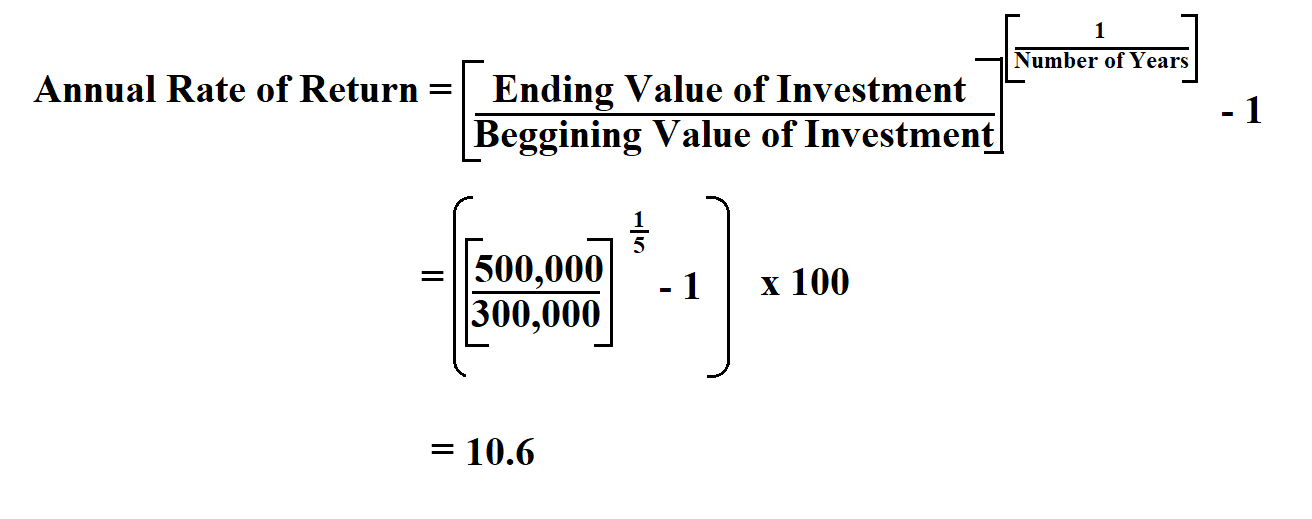
In view of this, recognizing revenues earlier and deferring expenses for later periods could lead to distortion of ARR results. Besides, the metric does not take into account the scale of the project on monetary terms. A venture returning a considerable absolute amount of shareholder wealth might have a low ARR.
- Kings & Queens started a new project where they expect incremental annual revenue of 50,000 for the next ten years, and the estimated incremental cost for earning that revenue is 20,000.
- Say that you buy a house for $250,000 (for simplicity let’s assume you pay 100% cash).
- The accounting rate of return, also known as the return on investment, gives the annual accounting profits arising from an investment as a percentage of the investment made.
- Using the ARR calculator can also help to validate your manual account calculations.
- The accounting rate of return is a capital budgeting metric to calculate an investment’s profitability.
What does ARR stand for?
As we can see from this, the accounting rate of return, unlike investment appraisal methods such as net present value, considers profits, not cash flows. The accounting rate of return, also known as the return on investment, gives the annual accounting profits arising from an investment as a percentage of the investment made. The accounting rate of return can be calculated by dividing the earnings generated on an investment by the amount of money invested. In today’s fast-paced corporate world, using technology to expedite financial procedures and make better decisions is critical. HighRadius provides cutting-edge solutions that enable finance professionals to streamline corporate operations, reduce risks, and generate long-term growth. The accounting rate of return (ARR) formula divides an asset’s average revenue by the company’s initial investment to derive the ratio or return generated from the net income of the proposed capital investment.
Internal Rate of Return (IRR) and Discounted Cash Flow (DCF)

The Accounting rate of return is used by businesses to measure the return on a project in terms of income, where income is not equivalent to cash flow because of other factors used in the computation of cash flow. Calculating ARR or Accounting Rate of Return provides visibility of the interest you have actually earned on your investment; the higher the ARR the higher the profitability of a project. If you’re making a long-term investment in an asset or project, it’s important to keep a close eye on your plans and budgets. Accounting Rate of Return (ARR) is one of the best ways to calculate the potential profitability of an investment, making it an effective means of determining which capital asset or long-term project to invest in.
Ask Any Financial Question
Moreover, the formula considers the earnings across the project’s entire lifetime, rather than only considering the net inflows only before the investment cost is recovered (like in the payback period). This indicates that the project is expected to generate student loan interest deduction an average annual return of 20% on the initial investment. The time value of money is the main concept of the discounted cash flow model, which better determines the value of an investment as it seeks to determine the present value of future cash flows.
Incompatibility with discounted cash flow methods
Below is the estimated cost of the project, along with revenue and annual expenses. This is a solid tool for evaluating financial performance and it can be applied across multiple industries and businesses that take on projects with varying degrees of risk. Depreciation is a direct cost that reduces the value of an asset or profit of a company. As such, it will reduce the return on an investment or project like any other cost. The ARR can be used by businesses to make decisions on their capital investments.
Sign up for latest finance stories
The accounting rate of return is one of the most common tools used to determine an investment’s profitability. Accounting rates are used in tons of different locations, from analyzing investments to determining the profitability of different investments. The accounting rate of return (ARR) is an indicator of the performance or profitability of an investment. The RRR can vary between investors as they each have a different tolerance for risk. For example, a risk-averse investor requires a higher rate of return to compensate for any risk from the investment. Investors and businesses may use multiple financial metrics like ARR and RRR to determine if an investment would be worthwhile based on risk tolerance.
If the ARR is positive (equals or is more than the required rate of return) for a certain project it indicates profitability, if it’s less, you can reject a project for it may attract loss on investment. The Accounting Rate of Return (ARR) Calculator uses several accounting formulas to provide visability of how each financial figure is calculated. Each formula used to calculate the accounting rate of return is now illustrated within the ARR calculator and each step or the calculations displayed so you can assess and compare against your own manual calculations.
The present value of money and cash flows, which are often crucial components of sustaining a firm, are not taken into account by ARR. Since ARR is based solely on accounting profits, ignoring the time value of money, it may not accurately project a particular investment’s true profitability or actual economic value. In addition, ARR does not account for the cash flow timing, which is a critical component of gauging financial sustainability. The internal rate of return (IRR) also measures the performance of investments or projects, but while ROR shows the total growth since the start of the project, IRR shows the annual growth rate.

